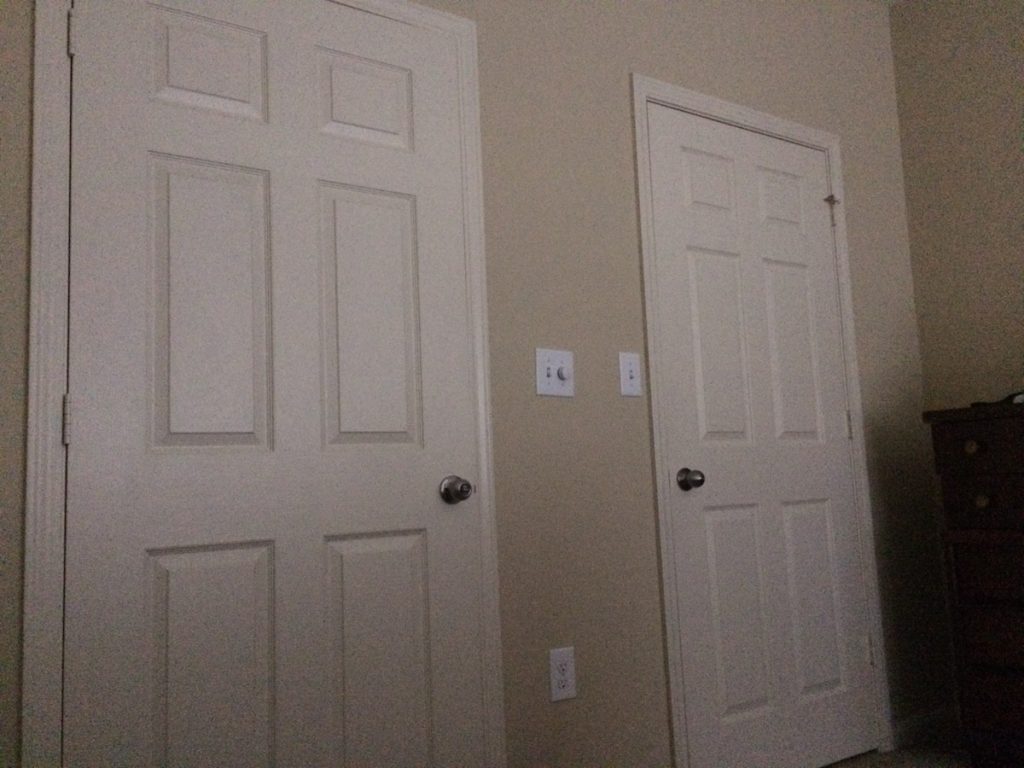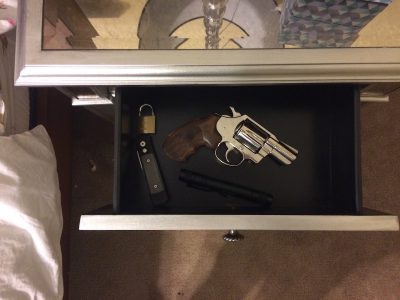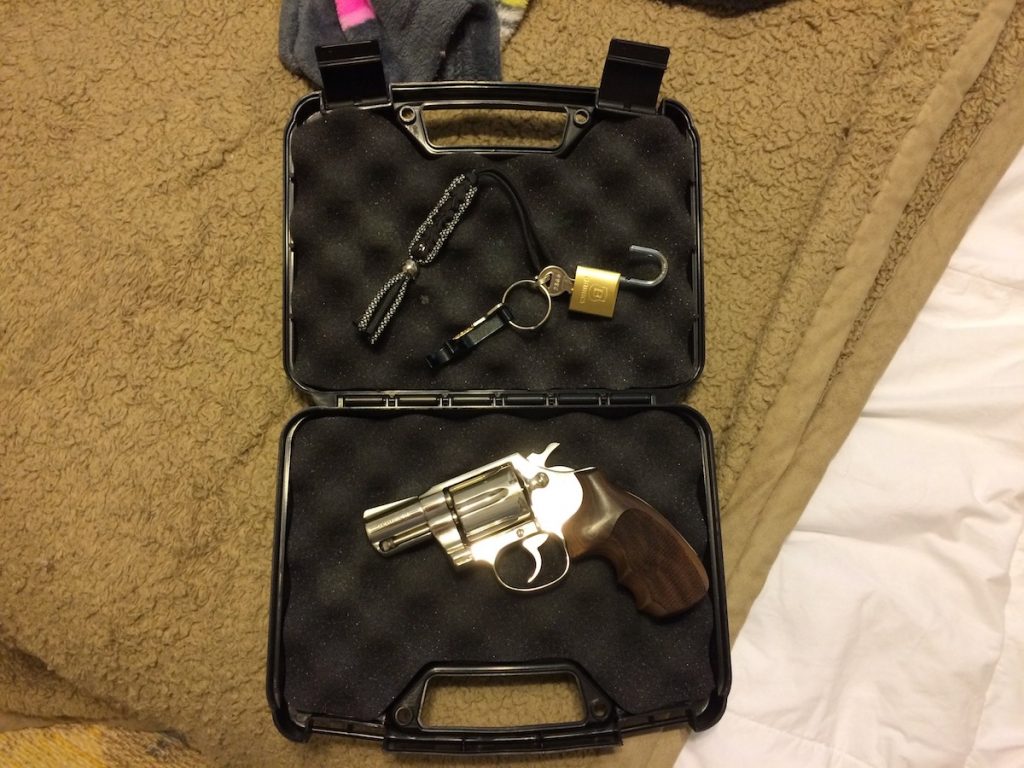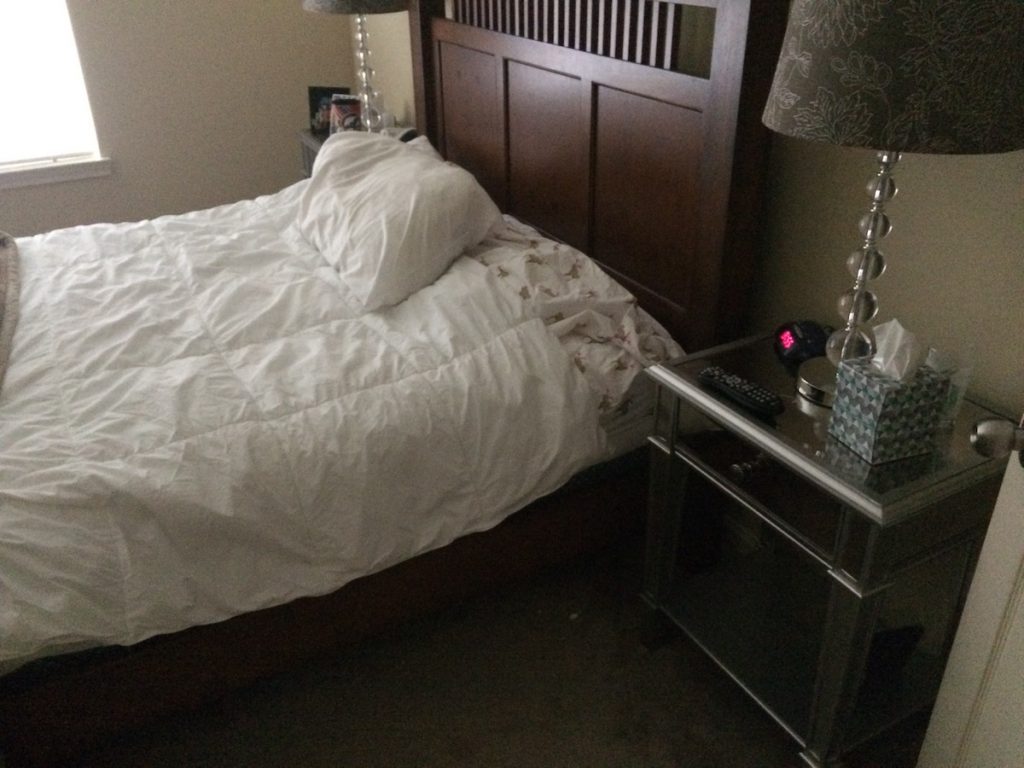Lately, I’ve been thinking a lot about my home defense posture, you know, mulling over the obvious questions, what would happen if someone broke into my one-bedroom apartment? Would I be prepared to confront them and defend my lovely girlfriend and our adorable puppy?
While thinking about this question, I was reminded of what I’ve come to learn over the years which is that in order to successfully defend one’s home, one needs the following:
- A basic proficiency in firearms,
- The tools of the trade,
- Additional security measures (alarms, dogs, motion-sensor lights),
- A plan on how 1, 2 and 3 come together.
Now, I have all those bases covered. However, as I began to reflect more and more what I realized is that there was, at least, one piece of critical information I was missing. That was, how quickly can I expect to execute my plan? To unpack that a little further, how quickly can I recognize the threat, arm myself, contact the authorities, find safety for my family and, if need be, confront the threat?
Time matters in these situations, right? Since, I live in a rather small and confined space, as mentioned, a one-bedroom on the third floor with only one point of entry/egress (unless we opt to jump from the bedroom window, 30-feet to the ground below), I need to ensure I can act quickly should an intruder come busting through my door.
In a nutshell, I needed to practice my plan to see how long it would take me to execute it.
To make this more educational, for you the reader, what I decided to do was to drill three different setups as it relates to my hardware (where and how I store my firearm). For lack of a better description, I’m using an environmental theme and calling the setups: “high threat,” “low threat,” “no threat.” Now, don’t get too hung up on the labels. One can argue that there is no such thing as a “no threat” environment, moreover that even if you lived in a safe, low-crime suburb, it still might be best to treat it like a high-threat environment. Anyways, all that’s a conversation for a different day.
- High-Threat Environment: Loaded gun in nightstand.
- Low-Threat Environment: Loaded gun in locked container in dresser drawer across from bed.
- No-Threat Environment: Unloaded gun in locked container in dresser drawer with ammo stored separately in closet.
I’m not here to tell you what your setup should be, nor am I going to disclose what setup I prefer (though, it may be obvious). Everyone’s home situation is different. You may have children in your home, or you may have someone with substance abuse issues in your home, etc., etc. So, it’s up to you to determine what works for you. Also, it should be noted that many people believe that you should never have an unsecured firearm in your household regardless of your personal conditions. In other words, the “High Threat” setup should never be an option. My take (and I’ll keep saying this), judge for yourself what’s best for you.
Moreover, it’s up to you do follow all local at state laws regulating the storage of firearms. That’s right folks, in some states the government believes it knows more than you do as to how you should store your private property. Massachusetts, for example, requires all firearms not being carried or not “under the control of the owner or other lawfully authorized user” be secured with a locking device.

I’m literally in bed in this situation. I’m on the left side of the bed. To my left is the nightstand and the door to the apartment and the door to the closet. In front of me is the dresser.
I’m going to drill each setup as if it was a break-in during the middle of the night while I’m sleeping in bed. The steps of my plan, in order, are as follows: (a) recognize the threat, (b) alert the girlfriend, (c) grab the firearm, (d) lock the bedroom door, (e) ensure that the GF is contacting the authorities and that she has dog corralled in her lap, (f) set up a barricade behind the dresser, (g) wait for authorities to arrive or alternatively, and if need be, engage the threat.
The time crunch that really matters is the time it takes me to get out of bed and grab the firearm (and load it, depending on the setup). That’s what’s reflected in the time trials below — how long it takes me to arm myself. Ideally, I’d like to run the whole plan from soup to nuts with the GF and the dog but, alas, she was at work during testing.

The two doors. The one on the left is the exit. The one on the right is the closet. If an attacker is coming into this room, they’re coming through the door on the left.
High Threat:
- Trial One — 4.08 sec.
- Trial Two — 3.37 sec.
- Trial Three — 5.88 sec.

If you opt to keep a loaded gun in your nightstand, my advice is keep that drawer as clean as possible and include only the essentials: knife, gun, flashlight. Also, be sure to remove the gun when you leave the household and secure it in a safe or locked container until you return home.
As with all setups, I drilled this multiple times to get a ballpark estimate. Overall, assuming I hear the break-in, the time it takes for me to grab my loaded revolver from the nightstand is under six seconds.
Now, I should note that I cleaned out the nightstand before testing so that it’s super easy to locate the gun, even in the dark. I think that’s an important point to remember. If it’s a nighttime break-in, you’re not going to want to turn on the lights because (a) it’ll be temporary blinding and (b) it’ll give away your location to the intruder and thus remove any chance you have of creating an effective ambush. I recommend having a flashlight and your cell phone on your nightstand (learn how to use the light on your phone), so you have a little light if you need to assistance in locating your firearm.
The main advantage of the high-threat setup is obvious in that there is very little time spent arming oneself. The gun is there, in the nightstand drawer, loaded. It’s ready to rock and roll. In testing, I just rolled over, opened the drawer and grabbed the gun. In Trial 3, I struggled a bit with the drawer. I tried to go super fast and as a result, I only opened the drawer halfway. The result was I had to maneuver the gun to get it outside the drawer. It cost me a few seconds.
Since I was still laying down when I reached for the gun, I learned something I had not thought of. You can really only use one arm and hand to manipulate the drawer because you’re on your side in the bed using your other arm to prop yourself up so you can get to the drawer. So, in this setup, you have to make a decision on whether you want to get up out of bed before you go for the gun or just go for the gun while you’re still in bed, one-handed. Food for thought.
Low Threat:
- Trial One — 23.10 sec.
- Trial Two — 21.16 sec.
- Trial Three — 19.43 sec.
Now, here is where things get a bit more tricky. The gun is in a dresser drawer several steps away from the bed. It’s in a locked container. I need to find the key in the nightstand, go over to the dresser, unlock the container and grab the loaded gun.
First things first, if you go this route, make sure you have the key to your lock on a lanyard or something big and easy to locate so that you don’t have to spend extra time rummaging through the drawer. I put my key on a lanyard and since the drawer is basically empty aside for a flashlight and a knife, I have no problem finding the lanyard.
During testing, I was able to get to the dresser and open up the container and grab the gun under 24 seconds. I felt like I got lucky on each attempt because I had no issue unlocking the container. Putting that small key in that lock can be tricky (as you’ll see, it cost me some time in the No threat setup).
Overall, to keep the gun loaded but locked cost me about 15 more seconds than having it in my nightstand. But if you have kids or are concerned about someone touching your firearm who is not supposed to, this may be a workable option. Again, it’s up to you!
No Threat:
- Trial One — 1:00.23 sec.
- Trial Two — 1:05.54 sec.
- Trial Three — 1:33.43 sec.
In this scenario, instead of going to the unloaded gun, I went straight to the closet where I have the ammo on its own little shelf. Then, I went to the dresser drawer and grabbed the container, unlocked it, and proceeded to load the revolver. Note, I did not use the assistance of a speedloader. All in all, I was able to execute the plan under 1 minute and 33 seconds.
What added so much time? Well, I got tripped up unlocking the container. Literally, that little key was becoming a pain-in-the-butt to get in on that third try. I also dropped a few rounds while loading trying to make up for the lost time on the failure to unlock right away.
What can I say other than this scenario adds a lot of contingencies. Can you find the ammo? Can you unlock the container? Can you load the firearm? Can you do all of this under immense stress? In theory, you want to remove as many contingencies as possible. More food for thought.

Protecting the people and the pets we love. This is why we practice, and train, and obsess about home defense. She was a bit confused on why I kept jumping up out of bed only to jump back into bed.
Conclusions:
Every Second Counts
An intruder who busts down my door can reach my bedroom doorway (if they know where they’re going) in under five seconds (I timed myself running from the doorway to the bedroom entrance to get an idea of how quickly it could be done). That’s fast! And it conveys the central point of this article, which is that in a home defense situation, you’ll never know how much time you’ll have before you have to fight. Could be seconds. Could be minutes. You don’t know. The key then is to find out how long it takes you to execute. Is that time fast enough? Do you need to streamline your plan? Are you confident with your process? All questions you’ll have to address.
Cleanliness Is Next to Godliness
Is cleanliness really next to godliness? Who knows? Maybe cleanliness does reflect spiritual purity. Then again, maybe it doesn’t. But I can tell you that in a home defense situation, cleanliness is critical! Keep your stuff organized! Keep your drawers clean and uncluttered. Clutter is the enemy! Heck, that might be the biggest takeaway of this whole experiment.
Slow and Steady
What do Delta Force operators say, “Slow is smooth. Smooth is fast” or something? Well, that’s certainly the case with grabbing your stuff during a home defense drill. Don’t rush! I could go relatively quickly, but the moment I tried to push beyond what was a normal hurried pace or faster than what I was comfortable with, I’d mess up. This point underscores the need to practice your process, whatever that may be so that you can determine the speed at which you are most comfortable operating at.
Butterfly Effect
Literally, there are a million variables when doing these exercises. And every little decision you make has consequences. For example. I’ve debated over whether I should attempt to lock the bedroom door first before I grab the gun or vice versa. For a “high-threat” setup, it makes sense to grab the gun first then lock the door. The gun is right there in the dresser drawer. However, for the other two setups, since I cross the opening of the door to get to the dresser, it may make sense to lock the door first. Or maybe not. Or maybe it’s situation dependent on how much time I feel I have in that moment. Anyways, a simple decision like this may have major ramifications in a real life encounter, so, running these drills force you to think more about what is the optimal order of the plan.
Your Turn!
Listen, the whole point of me writing this article was to get you to practice and test yourself at your own home. What I’ve learned may not necessarily be that beneficial to you. Moreover, my trial times are completely irrelevant to you. You need to run this drill yourself and discover just how efficient you are at executing your plan. If you do, you’ll probably find new ways to shave off time. After all, time is more than just money, it could be a matter of life and death. Considering that every second counts in a home defense situation, what are you waiting for? Do it!




Lets leave kids out of the scenario as there presents creates additional hurdles to overcome.
Gun in nightstand drawer is too slow requiring extra steps to access. On top of nightstand requires a reach/visible movement and is in view to Bad Guy if he gets close before. You become alert. Bed guns should be secured to bed frame, under headboard and you should be able to access them with discrete movement.
Use baby monitors as a early warning system to amplify breaching noise in addition to alarms which can be defeated. Adds time cushion to your response. Bedroom doors should be as strong as exterior doors including locks, which SHOULD BE LOCKED before you go to bed: gives more alert time and barrier delay.
Don’t go out looking for the bad guy(s), they may ambush you. Stage at offset angle (90° if possible) from bedroom door and defend in place. Do the 911 call.
Assume high threat all the time. If someone breaks in, most likely they are not going to give you 20 seconds. Imagine someone breaks down the door. Now count to 20 and see how it feels.
High-Threat Environment: Loaded gun on nightstand, no lock + 2 seconds Security Alarm and dog. …come get some !